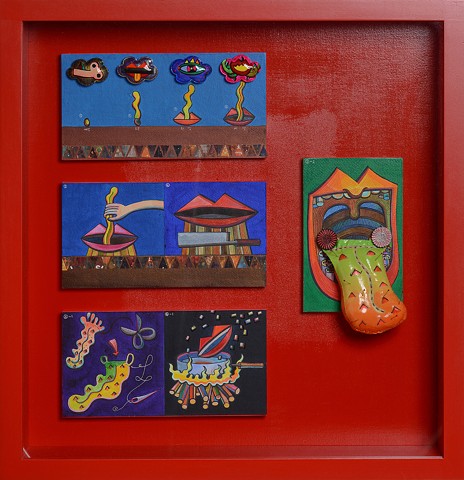2012
Concerning Similarities and Differences among the Tongue, Leaf, and Liver
Just as the tree changes its foliage each year, s/he can change his/her tongues.
The time period is not set like it is for leaves but as if there is a button underneath the tongue, so s/he can easily change it.
The seed of an @ is small but it isn’t possible to estimate how big it will be when it’s full-grown
1. On a rainy, gloomy evening I plant the seed.
2. A week after the seed has been sowed, a bud starts to sprout.
3. Between the gaps of the stems, a leaf in the shape of an @ emerges.
4. After three months, there is a crack on the lips and a full-grown @ surges and flutters in the wind.
5. A full-grown @ is harvested.
5-1. After cutting it up, an @ is sewn along its contour.
5-2. Put a stitched @ on the button right behind the lower wisdom teeth. Show it off.
6. The lips or the stems are not to be discarded after the harvest of the @. The lips have to be harvested last. The seeds too have to be harvested.
6-1. Sprinkle salt on the lips and stir-fry it in the frying pan; it will become a remarkable dish that tastes like eggplant, with the flavor of a kiss. Seduced by this lip dish, there are people who forget the @. But, in the end there comes a day when one has to compete solely with the @.
In place of an @, the tongue, liver, word, and leaf can be substituted.
